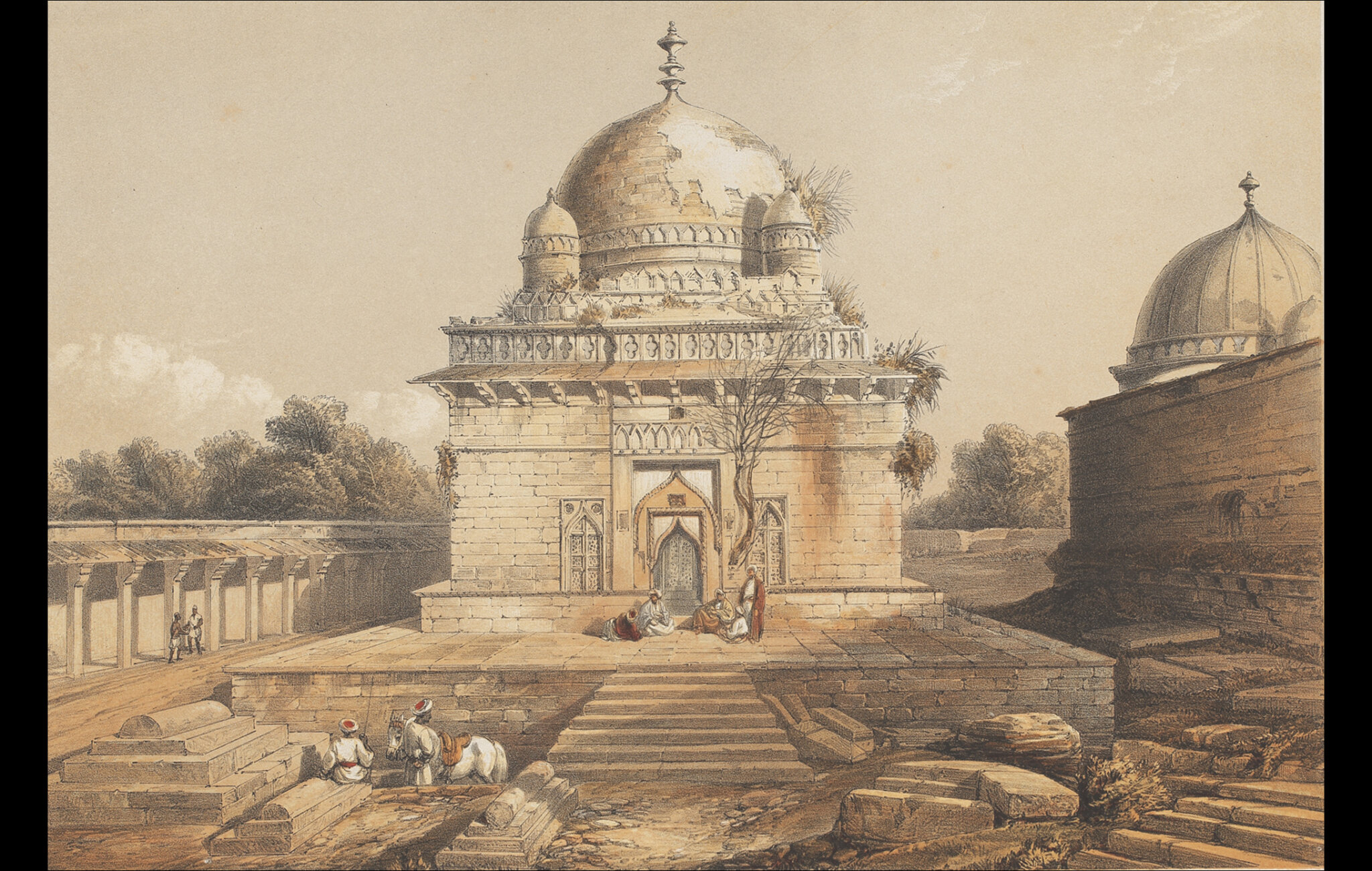
This engraving from the book The Ruins of Mandoo: The Ancient Mahommedan Capital of Malwah in Central India, 1859 illustrates features of Mandu in western Madhya Pradesh, an ancient city of historical and architectural significance.
The beautiful fortress town can be dated back to the 6th century, since when it has continually been the site of many conquests and civilisations, including those of the Paramara Dynasty, the Delhi Sultanate and the Mughals. These empires left behind examples of spectacular architecture such as Jami Mosque (Jumah Musjid), Jahaz Mahal, the palace of Baz Bahadur along with a pavilion he built for his beloved queen Roopmati, the tomb of Hoshang Shah Ghuri (Sultan Hoossain Shah Ghuree) and many more.
Most of the city’s surviving architecture was built in the 15th-16th centuries under the reign of the Sultans of Malwa. Hoshang Shah Ghuri (r. 1405 – 1431) was the second Sultan of Malwa who moved their capital from Dhar to Mandu.
Many structures in Mandu serve as examples of early Islamic architecture and are said to have inspired later Mughal architecture in the north. Shah Jahan himself studied the tomb of Hoshang Shah, before planning the Taj Mahal along with his architects. Both are encased in white marble.
Title
The Marble Mausoleum of the Sultan Hoossain Shah GhureePeriod
1859Artist
Captain Claudius HarrisEngraver
J Guiaud based on sketches by Captain Claudius HarrisPublisher
Day and Son, LondonMedium
Coloured lithographDimensions
H: 27.5 x W: 37.5 cmAccession No.
2020.1.1 (1)Genre: Etchings & Engravings
